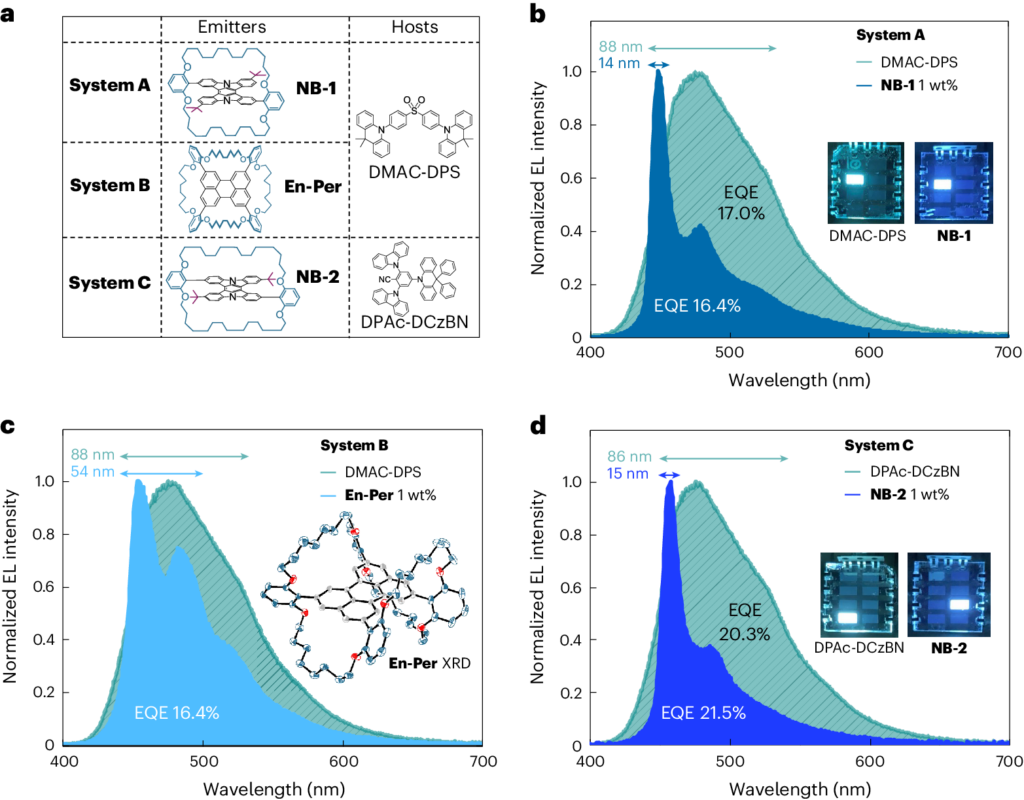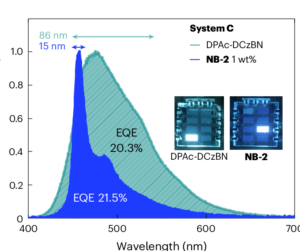In a groundbreaking study published in Nature Materials, a team of researchers from Northumbria, Cambridge, Imperial, and Loughborough universities have developed a new approach to producing blue light in OLED displays. This innovation could lead to more energy-efficient and longer-lasting screens for smartphones, televisions, and other devices.
The key to this breakthrough lies in the design of a new light-emitting molecule that addresses the notorious “blue OLED problem.” Blue light-emitting subpixels in OLED displays are the least stable and most energy-intensive, often leading to screen burn-in and reduced device lifespans.

The researchers’ novel molecule features shields that block destructive energy pathways and control how the molecules interact. By simplifying the emissive layer of the blue pixel to only two components, the team has maintained high efficiency while potentially driving down manufacturing costs.
Dr. Marc Etherington, Assistant Professor at Northumbria University, led a spectroscopic analysis of the molecules’ triplet energies, providing crucial insights into their energy transfer process. His findings helped the team form a complete picture of the energy level arrangement, informing the design and use of materials in future OLEDs.
Co-corresponding author Dr. Daniel Congrave from the University of Cambridge, who led the material design and synthetic work alongside Prof. Hugo Bronstein, emphasized the importance of this discovery. “The molecule we describe in this paper is one of the narrowest emitting blue molecules out there, which is very useful for screens because it allows for high color purity,” he stated.
As manufacturers and consumers alike work towards net zero targets, this breakthrough in blue OLED technology could have a significant impact on the energy consumption of our devices in the information era. While it may take some time before this innovation reaches consumer electronics, it represents a promising step towards more efficient and sustainable displays.
Reference
Cho, H.-H., Congrave, D. G., Gillett, A. J., Montanaro, S., Francis, H. E., Riesgo-Gonzalez, V., Ye, J., Chowdury, R., Zeng, W., Etherington, M. K., Royakkers, J., Millington, O., Bond, A. D., Plasser, F., Frost, J. M., Grey, C. P., Rao, A., Friend, R. H., Greenham, N. C., & Bronstein, H. (2024). Suppression of Dexter transfer by covalent encapsulation for efficient matrix-free narrowband deep blue hyperfluorescent OLEDs. Nature Materials, 1–8. https://doi.org/10.1038/s41563-024-01812-4

